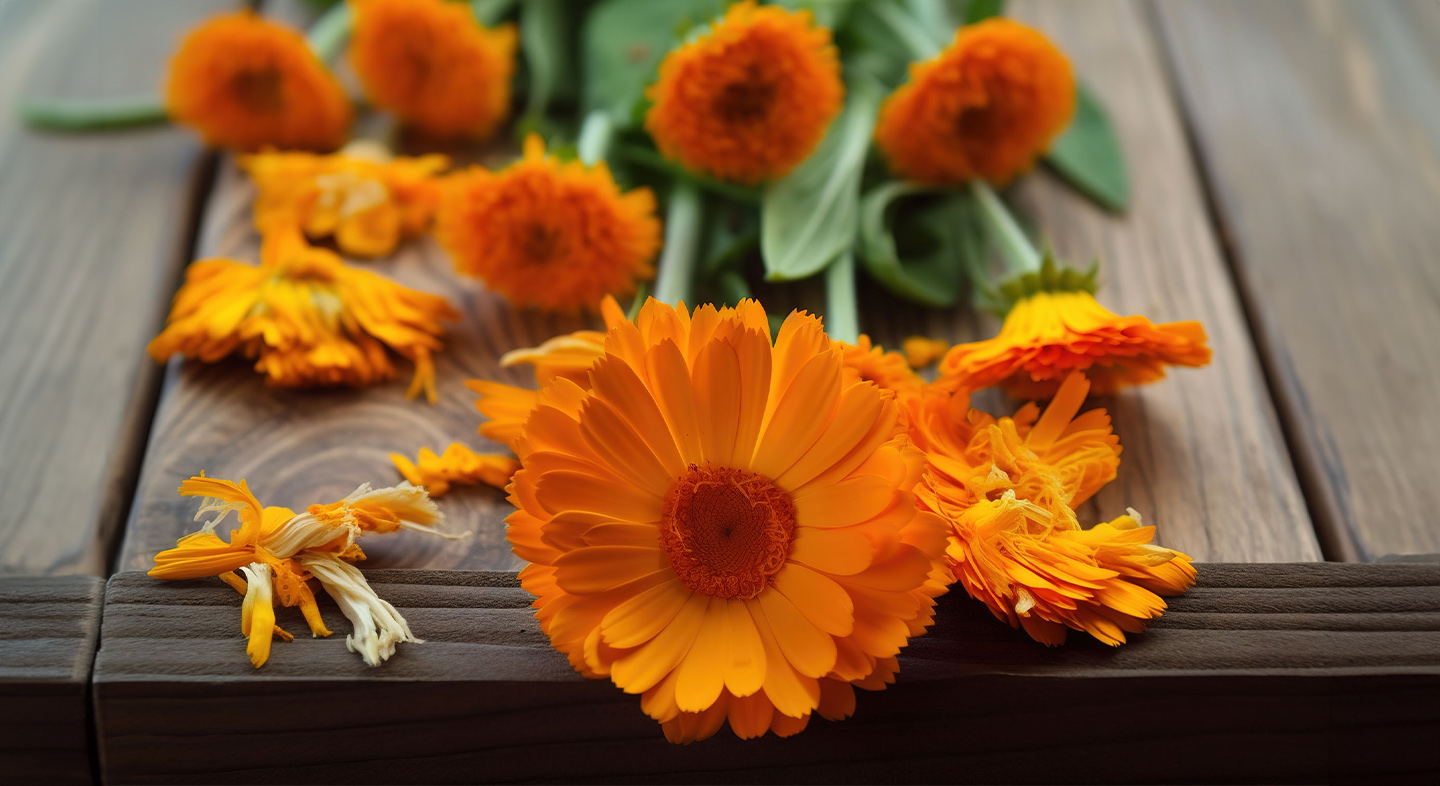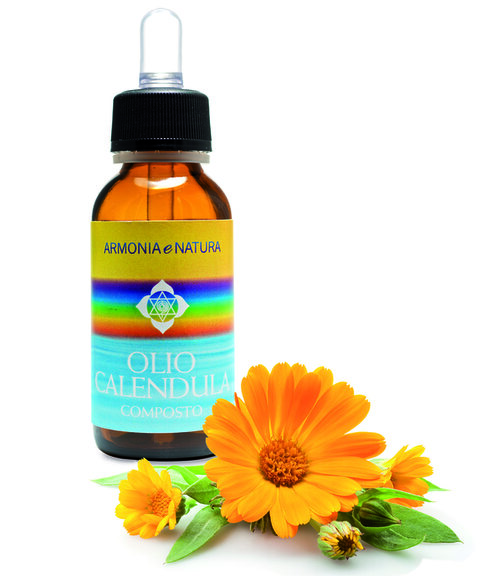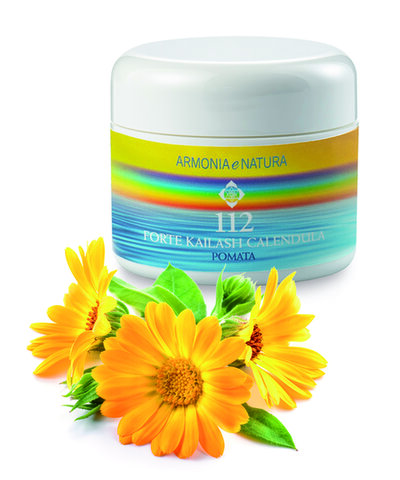Plant Ingredients
on
Skin care

peer-reviewed
Calendula officinalis, a plant with a lot of regeneration properties for the skin
PENELOPE ZANOLLI*, MANOLA ATTOMBRI
⃰Corresponding author
Armonia e Natura, Noale, Italy
ABSTRACT:Calendula officinalis L. (Asteraceae) is an annual herbaceous species native from Mediterranean region and has been cultivated as a food and medicinal plant since the Middle Ages. More than 35 properties have been attributed to flower extracts and these preparations have been considered valuable remedies for burns, bruises, cuts, rashes, skin wounds and other conditions. These pharmacological activities of marigold are related to several classes of secondary metabolites. C. officinalis is probably the queen of anti-inflammatory plants and its main activity as an anti-inflammatory constituent justifies its utilization as a cosmetic and personal care products. In this article it is summarized the properties of calendula plant extracts and their use in cosmetics.
Introduction
According to WHO, about 80% of the world population mainly based on herbal remedies. Plants being composed of unique chemical diversity and they also show diversity in their biological activities and drug-like properties. As a result, they encompass huge, untapped resources of potentially safe and effective therapeutics and can be important in developing new lead compounds and scaffolds (1). Calendula officinalis is one of the best promising plants for using as main ingredient in skin care products. The intention of this paper is to describe and summarizing the current knowledge on calendula, in particular on plant extracts properties and their effect on the skin.

Botanical description
Calendula officinalis L. (Asteraceae) is an annual herbaceous species native from Mediterranean region. It grows in many regions of Italy but also in a wide range of places including Central, Southern, and Eastern Europe, West Asia, Germany and America (2-3). C. officinalis is a plant 20-50 cm tall with sparsely branching erect stems, rectangular lance leaflets with tubular disc florets yellow to orange. The inflorescence consist of a single flower head with yellow or orange capitula and blossoms are produced year round, but flowering peak around March and July (4). Aachen fruit is brown with a rough surface.
Edible and traditional medicinal uses
Also known as pot marigold, owing to its historical use in soups and stews for combating diseases (5-6), C. officinalis has been cultivated as a food and medicinal plant since the Middle Ages and the colorant made from this plant was used in the ancient Greece and Rome and by early Indian and Arabic population (7).The Food Drug Administration (FDA) has classified C. officinalis as a GRAS (Generally Recognized as Safe) substance (8). Edible Calendula flowers possessing nutritional properties and being rich in quinic acid and tocopherol (9). As medicinal plant, it is one in use since ancient times and it holds appreciable importance in traditional medicine. First attributions of the medicinal use of C. officinalis is found in a fourteenth-century medical book (10). However familiarity with the use of calendula appeared to be widespread even in the 13th century and these early manuscript identified the marigold used for its wound-healing capabilities as Calendula officinalis (11). C. officinalis is mentioned in Ayurvedic and Unani system of medicine demonstrating that leaves and flowers seem to have antipyretic, anti-inflammatory, antiepileptic and antimicrobial properties (12-13). The plant is also included in German Commission E, European Scientific Co-operative on Pythotherapy, European Herbal Pharmacopoeia, EMA and World Health Organization monographs (14). More than 35 properties have been attributed to flower extracts and these preparations have been considered valuable remedies for burns, bruises, cuts, rashes, skin wounds and other conditions (15-16). Additionally, C. officinalis infusion may be used to treat beestings, eye inflammations, abscesses and boils, varicose veins, eczema or as gargle for mouth sores or to relieve toothache. It also improves blood and lymphatic fluids circulation and aids in the elimination of toxins from the body (17). Besides, traditionally, C. officinalis is taken internally to treat fevers, jaundice and promote menstruation.
Pharmacological effects
Phytopharmacological studies of different marigold extracts have shown adjuvant properties in different pathological states and seem to have anti-tumoral, antiviral, antidiabetic, analgesic, anti-inflammatory, wound healing, anti- hyperlipidemia, immunomodulatory, anthelmintic, antigenotoxic, neuroprotective, hepatoprotective and cardioprotective and antioxidant properties (18-19-20-21-22-10- 23-24-25-26).
Chemical constituents
The pharmacological activity of marigold is related to the content of several classes of secondary metabolites (27). Interestingly, it has been found to be a rich source of bioactive compounds, containing a wide range of chemical constituents including triterpenes, saponins, triterpendiol esters, free and esterified triterpenic alcohols, polysaccharides, steroids, phenolic acids, tannins, quinines, coumarins, flavonoids (quercetin, rutin, narcissin, isorhamnetin, kaemferol), carotenoids, terpenoids, amino acids, essential and volatile oils, among many other chemical groups (28-29-10-30-31).

Effects on the skin
C. officinalis is probably the queen of anti-inflammatory plants. Its main activity as an anti-inflammatory constituent justifies its utilization as a cosmetic and personal care product for wound treatment (32-33). The most-well known skin issues are dryness, eczema, acne, dullness, wrinkles, pimples, aging, skin spots, and so on (34-35).
Nowadays, several calendula preparations are available for incorporation in topical formulations directed towards wound healing and for soothing inflamed and damaged skin, like extracts, tinctures, and oils (36-37). C. officinalis is used mainly for cutaneous and internal inflammatory diseases of several origins. In cosmetic products, calendula is used in formulations for sensitive skin and soothing products (e.g. after-sun products), among a variety of presentations, including skin, hair, eye and bath products, with recognized safety for use in cosmetics (38).
The European Medicines Agency (EMA) has approved the use of lipophilic and aqueous alcoholic extracts of C. officinalis as a traditional medicinal products in the treatment of minor inflammatory diseases of the skin and as an aid in the healing of small wounds (39-40-41). Particularly, extracts, tinctures, balms and salves made from flowers of C. officinalis are applied directly to the skin to heal wounds, as remedies for diverse burns, including sunburns and skin wounds, and to soothe inflamed and damaged skin (42). Also, their flowers are believed to be useful as an antiseptic, for treating skin ulcerations and eczema (43). It has been reported that calendula seems to increase the rate of epithelialization, granulation tissue formation and the regeneration of dermal collagen in skin wounds (44) and also seem to increase neovascularization process and angiogenic activity (45). It has been stated that one of the main ingredients responsible of the anti-inflammatory effect is faradiol (37), but also triterpenes and polysaccharides (46) which role is believed to be by intervention in immunological reactions. Secondary metabolites such as flavonoids, tannins, saponins, terpenoids, coumarins and others alone or in association are directly associated with these effects (47). Some experimental tests showed that C. officinalis creams, containing the extract of C. officinalis, increase skin moisturization and firmness (48). Marigold flowers contain large quantities of antioxidant compounds (flavonoids, carotenoids and polyphenols), suggesting they may possess antioxidants to prevent UV-induced skin damage and skin damage caused by free radicals (49-50). These antioxidant substances are found to have beneficial effects on proliferating aging skin cells (51). An antibacterial action has also been attributed to triterpene glycosides of calendula (52). Calendula is very effective to treat acne (53), radio dermatitis and dermatitis (54-55-56). It can repair dry skin, reduce redness, and heal wounds (57). It also helps remove acne scars and cure fungal infections. The range of possible applications for these multi-functional calendula active ingredients is only bounded by one’s imagination. Armonia and Natura laboratories produce a lot of cosmetic products containing calendula extracts for skin care and skin regeneration. These products are prepared using plants, pure plant extracts, pure essential oils and mother tinctures produced according to the spagyric method. In this way, the plants are full used, exploiting all the properties of the plant used (26-31).We can therefore say that the spagyric extract, compared to the classic herbal one, transmits the virtues of the plant in a purer and more amplified way and acts both from a chemical and energetic point of view. The practice of “spagyria” dates back to Paracelsus (1493–1541), who first coined the term to mean “separate” (spao) and “combine” (ageiro), indicating that spagyric preparations are based on “separation”, “extraction”, and “recombination” of the active extractives, including mineral components (58). Plant minerals and oils act as catalysts to stimulate the body’s own natural powers of healing and homeostasis (59). It is known that spagiric preparations could generally maintain good stability and biological activity over time and they be considered to have good biological activity (60). Garlic spagyric formulas are showed to be most effective for treatment of toenail fungi (61) and recently, it is proved the efficacy of the spagyric essence prepared from different plants in wound healing (62).
Natural ingredients have been used for centuries for skin care purposes and are often better equipped in fighting against skin problems (63). Nowadays, natural ingredients have become more common in cosmetic preparations due to consumers’ concern about synthetic products that are enriched with chemical substances. Non-poisonous and hypoallergenic items are much in demand because for quite a while risky synthetic substances, (e.g. some heavy metals) before these were restricted for their toxicity (64). For these reasons there is a great demand of herbal cosmetics, mainly because their lack of side effects (65). Herbal preparations do not produced instant cures, but rather offers a way to put the body in proper tune with nature. Recently, there is incredible interest for certain successful plant extracts to be used in cosmetic products, among these are mentioned the calendula extracts (66). This changed mindset of using skin-care products that have natural ingredients is nothing less than a revolution. However, further study and new avenue of research activities are highly required to explore the efficacy of the active ingredients of herbs and botanicals that be incorporated to prepare herbal cosmetics and also to develop and optimize processes for producing good quality skin-care as well as therapeutic products.
References and notes
- Yuan, H., Ma, Q., Ye, L., Piao, G. The traditional medicine and modern medicine from natural products. Molecules, 21(5), 559 (2016). https://pubmed.ncbi.nlm.nih.gov/27136524/
- Fleming, T. PDR for herbal medicines. Medical economics (2000).
- World Health Organization. WHO monographs on selected medicinal plants, vol.2. World Health Organization (2002). https://www.echocommunity.org/resources/454be4ba-594c-4454-9bdc-e991843842f7
- Coste, H. In: Blanchard, A. (Ed.), Flore descriptive et illustrée de la France, de la Corse et des contrées limitrophes (Tome 1). Libraire des Sciences et des Arts, Paris (1937).
- Duke, J.A., Bogenschutz-Godwin, M.J., Du Celliar, J., Duke, P.A.K. Hand book of medicinal herbs, 2nd edition, CRC Press, Boca Raton, pp. 139-140 (2002). https://repository.poltekkes-kaltim.ac.id/1148/1/Handbook%20of%20Medicinal%20Herbs%20(%20PDFDrive%20).pdf
- Gazim, Z.C., et al. Analysis of the essential oils from Calendula officinalis growing in Brazil using three different extraction procedures. Revista Brasileira de Ciências Farmacêuticas, 44(3), 391-395 (2008). https://www.scielo.br/j/rbcf/a/qHWr339LdzWHyCKCfPN4B7B/?lang=en
- Efstratiou, E., Hussain, A.I., Nigam, P.S. et al. Antimicrobial activity of Calendula officinalis petal extract against fungi, as well as Gram-negative and Gram-positive clinical pathogens. Complementary Therapies in Clinical Practices, 18, 173-176 (2012). https://pubmed.ncbi.nlm.nih.gov/22789794/
- Svalov, A., Ognyavanov, M., Vasileva I. Pectic polysaccharides extracted from pot marigold (Calendula officinalis) industrial waste. Food Hydrocolloids, 101, 105-545 (2020). https://www.researchgate.net/publication/337575564_Pectic_polysaccharides_extracted_from_pot_marigold_Calendula_officinalis_industrial_waste
- Pires, T.C.S.P., Dias M.I., Barros L., Ferreira, I.C.F.R. Nutritional and chemical characterization of edible petals and corresponding infusions: valorization of new food ingredients. Food Chemistry, 220, 337-343 (2020). https://pubmed.ncbi.nlm.nih.gov/27855909/
- Egeli, D. Calendula officinalis L. Novel drugs targets with traditional herbal medicine. Scientific and clinic evidence. Dereli, F.T.G., Ilhan M., Belwal T. (Eds). Springer, pp. 49-71(2022). https://pubmed.ncbi.nlm.nih.gov/31145533/
- Scheffer, J.J.C. De goudsbloem (Calendula officinalis L.) alsgeneeskruid in verledenenheden. PharmaceutischWeekblad, 114, 1149-1157 (1979).
- Arora, D., Rani, A., Sharma, A. A review on phytochemistry and ethnopharmacological aspects of genus Calendula. Pharmacognosy Reviews, 7(14),179 (2013). https://pubmed.ncbi.nlm.nih.gov/24347926/
- Jan, N., Andrabi K.L., John, R. Calendula officinalis-an important medicinal plant with potential biological properties. In: Proceedings of the Indian National Science Academy, pp. 769-787 (2017). https://www.researchgate.net/publication/319189769_Calendula_Officinalis-An_Important_Medicinal_Plant_with_Potential_Biological_Properties
- Abdelwahab, S.I., Taha, M.M.E., Taha, S.M.E., Alsayegh, A.A. Fifty-year of global research in Calendula officinalis L. (1971-2021): a bibliometric study. Clinical Complementary Medicine and Pharmacology, 2, 100059 (2022). https://www.researchgate.net/publication/362131130_Fifty-year_of_Global_Research_in_Calendula_Officinalis_L_1971-2021_A_Bibliometric_Study
- Brown, D.J., Dattner, A.M. Phytotherapeutic approaches to common dermatologic conditions. Archives of Dermatology, 134, 1401-1404 (1998). https://pubmed.ncbi.nlm.nih.gov/9828875/
- Dhingra, G., Dhakad, P., Tanwar, S. Review of phytochemical constituents and pharmacological activities of the plant Calendula officinalis Linn. Biological Sciences, 02(02), 216-228 (2022). https://www.researchgate.net/publication/361292095_Review_on_phytochemical_constituents_and_pharmacological_activities_of_plant_Calendula_officinalis_Linn
- AshwlayanVD, K.A., Verma, M. Therapeutic potential of Calendula officinalis. Pharmacy and Pharmacology International Journal, 6(2),149-155 (2018). http://medcraveonline.com/PPIJ/PPIJ-06-00171.pdf
- Zittler-Eglseer, K. et al. Anti-oedematous activities of the main triterpenediol esters of marigold (Calendula officinalis L., Asteraceae). Journal of Ethnopharmacology, 57, 139-144 (1997). https://pubmed.ncbi.nlm.nih.gov/9254116/
- Jiménez-Medina, E. et al. A new extract of the plant Calendula officinalis produces a dual in vitro effect: cytotoxic anti-tumor activity and lymphocyte activation. BioMed Central Cancer, 6, 119 (2006). https://pubmed.ncbi.nlm.nih.gov/16677386/
- Miraj, S. The role of medicinal plants in the treatments of diseases: a systematic review of Calendula officinalis. Der Pharmacia Lettre, 8(14), 92-95 (2016). https://core.ac.uk/download/pdf/143840592.pdf
- Meenatchisundaram, S., Parameswar, G., Subbraj, T., Suganya, T., Michael, A. Note on pharmacological activities of Calendula officinalis L. Ethnobotanical Leaflets, 2009(1), 5 (2009).
- Baskaran, K., Marigold, C., Marigold, G., English, P., German, B. Pharmacological activities of Calendula officinalis. International Journal of Science and Research, 6(5), 43-47 (2017). https://www.ijsr.net/archive/v6i5/ART20173019.pdf
- Patil, K., Sanjay, C.J., Doggalli, N., Renuka Devi, K.R., Harshitha, N. A review of Calendula officinalis- magic in science. Journal of Clinical and Diagnostic Research, 16(2), ZE23-ZE27 (2022). https://www.researchgate.net/publication/358800025_A_Review_of_Calendula_OfficinalisMagic_in_Science
- Ullah, M.A., Hassan A., Hamza A. Calendula (Calendula officinalis) marigold as medicinal plant. Orthopaedics Case Reports, 2(1), DOI: 10.31579/2835-8465/009 (2023). https://clinicsearchonline.org/uploads/articles/1682758873OCR-23-RA-009-Galley_Proof.pdf
- Pandey, P., Despande, B. Pharmacological activities of Calendula officinalis. International Journal of Research and Analytical Reviews, 9(1), 460-468 (2022). https://www.ijsr.net/archive/v6i5/ART20173019.pdf
- Junius, M.M. Alchimia verde. La preparazione alchemica delle sostanze vegetali. Edizioni Mediterranee, 3° edizione, Roma, 206 pp. (2005). https://www.esonet.org/wp-content/uploads/2013/05/Ebook-Alchimia-ITA-Manfred-M.-Junius-Alchimia-Verde.pdf
- Ćetković, G.S., Djilas, S.M., Čanadanović-Brunet, J.M., Tumbas, V.T. Antioxidant properties of marigold extracts. Food Research International Journal, 37(7), 643-650 (2004). https://www.academia.edu/20763464/Antioxidant_properties_of_marigold_extracts
- Al-Snafi, A. The chemical constituents and pharmacological effects of Calendula officinalis-A review. Indian Journal of Pharmaceutical Science and Research, 5(3), 172-185 (2015). https://www.researchgate.net/publication/313678751_THE_CHEMICAL_CONSTITUENTS_AND_PHARMACOLOGICAL_EFFECTS_OF_CALENDULA_OFFICINALIS_-A_REVIEW
- Re, T.A. et al. Application of the threshold of toxicological concern approach for the safety evaluation of calendula flower (Calendula officinalis) petals and extracts used in cosmetic and personal care products. Food and Chemical Toxicology, 47, 1246-1254 (2009). https://pubmed.ncbi.nlm.nih.gov/19249334/
- Shahane, K. et al. An updated review of the multifaceted therapeutic potential of Calendulaofficinalis L. Pharmaceuticals, 16, 611 (2023) . https://www.mdpi.com/1424-8247/16/4/611
- Rescaldina, G. Alchimia. Una via di guarigione. Xenia edizioni, Milano, 213 pp. (1998).
- Grimme, H., Augustin, M. Phytotherapy in chronic dermatoses and wounds: what is the evidence? Forschende Komplementarmedizin, 6 (Suppl.2), 5-8 (1999). https://pubmed.ncbi.nlm.nih.gov/10352374/
- Silva, D., Ferreira, M.S., Sousa-Lobo, J.M. Cruz, M.T., Almeida, I.F. Anti-inflammatory activity of Calendula officinalis L. flower extract. Cosmetics, 8, 31 (2021). https://www.mdpi.com/2079-9284/8/2/31
- Kotnala, A., Verma, K., Sharma, A., et al. Indian medicinal plants for skin care ad cosmeceuticals: a review. Journal of Biomedical and Therapeutic Sciences, 6(2), 24-60 (2019). http://www.pubs.iscience.in/journal/index.php/jbts/article/view/936
- Jemimah, G., Reddy, T.S., Keerthana, M., Bonagiri, Y., Sharma, J.V.C. Medicinal plants used in the treatment of skin diseases. World Journal of Pharmaceutical Research, 8(13), 496-510 (2019).
- Moore, E.M., Wagner, C., Komarnytsky, S. The enigma of bioactivity and toxicity of botanical oils for skin care. Frontiers in Pharmacology, 11, 785 (2020). https://pubmed.ncbi.nlm.nih.gov/32547393/
- Kamble, S., Shinde, S., Mali, S., Jadhav, A. A review on preparation of calendula oil. Sumerianz Journal of Medical and Health Care, 6(1), 1-7 (2023). https://wjpr.s3.ap-south-1.amazonaws.com/article_issue/1575104818.pdf
- Andersen, F.A. et al. Final report of the cosmetic ingredient review expert panel amended safety assessment for Calendula officinalis-derived cosmetic ingredients. International Journal of Toxicology, 29, 221-243 (2010). https://pubmed.ncbi.nlm.nih.gov/21164072/
- Nicolaus, C., Sievers-Engler, A., Murillo, R., Lämmerhofer, M., Merfort, I. UHPLC-QTOF-MS as a valuable tool for identification of novel faradiol fatty acid diesters of Calendula officinalis flower. Planta medica, 81(16) (2015). https://www.researchgate.net/publication/284766581_UHPLC-QTOF-MS_as_a_valuable_tool_for_the_identification_of_novel_faradiol_fatty_acid_diesters_of_Calendula_officinalis_flowers
- Givol, Or BSc, M.D. et al. A systematic review of Calendula officinalis extract for wound healing. Wound repair and regeneration, 27, 548-561 (2019). https://pubmed.ncbi.nlm.nih.gov/31145533/
- Michalak, M. Plant extracts as skin care and therapeutic agents. InternationalJournal of Molecular Sciences, 24, 15444 (2023). https://www.mdpi.com/1422-0067/24/20/15444
- Safdar, W. et al. Pharmacognostical study of the medicinal plant Calendula officinalis L. (family Compositae). The International Journal of Cell and Molecular Biology, 1, 108-116 (2010). https://www.researchgate.net/publication/228599153_Pharmacognostical_study_of_the_medicinal_plant_Calendula_officinalis_L_family_Compositae
- Shafeie, N., Naini, A.T., Jahromi, H.K. Comparison of different concentrations of Calendula officinalis gel on cutaneous wound healing. Biomedical and PharmacologyJournal, 8(2),979-992 (2015). https://biomedpharmajournal.org/vol8no2/comparison-of-different-concentrations-of-calendula-officinalis-gel-on-cutaneous-wound-healing/
- Klouček-Popova, E., Popov A., Pavlova, N., Krusteva, S. Influence of physiological regeneration epithelization using fractions isolated form Calendula officinalis. Acta Physiologica et Pharmaceutica Bulgarica, 8(4), 63-67 (1982). https://pubmed.ncbi.nlm.nih.gov/7185264/
- Patrick, K.F.M., Kumar, S., Edwardson, P.A.D., Hutchinson, J.J. Induction of vascularization by an aqueous extract of the flowers of Calendula officinalis L. the European marigold. Phtyomedicine, 3(1), 11-18 (1996). https://pubmed.ncbi.nlm.nih.gov/23194855/
- Wagner, H. Search for new pant constituents with potential antiphlogistic and antiallergic activity. Planta Medica, 55, 235-241 (1989). https://pubmed.ncbi.nlm.nih.gov/2662231/
- Okuma, C.H. et al. Development of lamellar gel phase emulsion containing marigold oil (Calendula officinalis) as a potential modern wound dressing. European Journal of Pharmaceutical Sciences, 71, 62-72 (2015). https://pubmed.ncbi.nlm.nih.gov/25684193/
- Akhtar, N., Zaman, S.U., Khan, B.A., Amir, M.N., Ebrahimzadeh, M.A. Calendula extract: effects on mechanical parameters of human skin. Acta Poloniae Pharmaceutica, 68 (5), 693-701 (2011). https://pubmed.ncbi.nlm.nih.gov/21928714/
- Bernatoniene, J., Masteikova, R., Davalgiene, J., Peciura, R. Topical application of Calendula officinalis (L.): formulation and evaluation of hydrophilic cream with antioxidant activity. Journal of Medicine Plants Research, 5(6), 868-877 (2011). https://www.researchgate.net/publication/228473721_Topical_application_of_Calendula_officinalis_L_Formulation_and_evaluation_of_hydrophilic_cream_with_antioxidant_activity
- Shaker, N., Sabah, H. Plants protect DNA from UV damage and scanning their using in skincare and cosmetics products. University of Basra, collage of Pharmacy, pp.21 (2020).
- Karağac, M.S., Ceylan, H. Effects of natural polyphenols against skin aging. Proceeding Book of 1st International Conference on Recent Academic Studies ICRAS 2023, May 2 - 4, 2023, Konya, Turkey, 226-231 (2023). https://as-proceeding.com/index.php/icras/article/view/699
- Gracza, L., Szasz, K. Examination of active agents of petals of marygold (Calendula officinalis L.). Acta Pharmaceutica Hungarica, 38, 118-125 (1968). https://pubmed.ncbi.nlm.nih.gov/5723257/
- Gediya, S.K., Mistry, R.B., Patel, U.K., Blessy, M., Jain, H.M. Herbal plants: used as a cosmetic. Journal of Natural Product and Plant Resources, 1(1), 24-32 (2011). https://www.scholarsresearchlibrary.com/articles/herbal-plants-used-as-a-cosmetics.pdf
- Athar, M., Nasir, S.M. Taxonomic perspective of plant species yielding vegetable oils used in cosmetics and skin care products. African Journal of Biotechnology, 4(1), 36-44 (2005). https://www.ajol.info/index.php/ajb/article/view/15049
- Kodyan, J., Amber, K.T. A review of the use of topical calendula in the prevention and treatment of radiotherapy-induced skin reactions. Antioxidants, 4, 293-303 (2015). https://pubmed.ncbi.nlm.nih.gov/26783706/
- Simões, F.B., Santos, V.O., da Silva, R.N., da Silva, R.C. Effectiveness of skin protectors and Calendula officinalis for prevention and treatment of radiodermatitis: an integrative review. Revista Brasileira de Enfermagem, 73 (Suppl.5), e20190815 (2020). https://pubmed.ncbi.nlm.nih.gov/33084806/
- Mohammed, M.S.A. Traditional medicinal plants and skin disease. Insights of cardiovascular pharmacology research, 3(1), 04-11 (2023). https://www.opastpublishers.com/open-access-articles/traditional-medicinal-plants-and-skin-disease.pdf
- Moritz, S. Alchemy and contemporary spagyric medicine: A historical and socio-scientific approach. Interdisciplinary Science Reviews, 41, 13–27 (2016). https://www.researchgate.net/publication/304812243_Alchemy_and_Contemporary_Spagyric_Medicine_A_Historical_Medical_and_Socio-scientific_Approach
- Clarke, C.-G. Alchemical medicine for the 21st Century. Spagyric for detox, healing and longevity. Simon and Schuster Eds., 192 pp. (2010). https://www.amazon.it/Alchemical-Medicine-21st-Century-Spagyrics/dp/159477319X
- Avato, P., Argentieri, M.P. Quality assessment of commercial spagyric tinctures of Harpagophytum procumbens and their antioxidant properties. Molecules, 24(12), 2251 (2019). https://pubmed.ncbi.nlm.nih.gov/31212908/
- Parashar, B., Yadav, V., Maurya, B., Sharma, L. Natural therapy of fungal nail disease: review. The Pharma Innovation Journal, 1(4), 31-47 (2012). https://www.thepharmajournal.com/vol1Issue4/Issue_june_2012/9.pdf
- Sabat, P.K., Pradhan, S.P., Patro, R. valuation of excisional and incisional wound healing activity of electrohomeophatic drug (spagyric essence) green electricity in rats. International Journal of Pharmacy and Pharmaceutical Sciences, 12(10), 58-61 (2020). https://www.researchgate.net/publication/346102522_EVALUATION_OF_EXCISIONAL_AND_INCISIONAL_WOUND_HEALING_ACTIVITY_OF_ELECTROHOMEOPATHIC_DRUG_SPAGYRIC_ESSENCE_GREEN_ELECTRICITY_IN_RATS
- Jahan, F., Happy, A.A., Chowdhury, M.M., Hossain, M.A. Natural herbs and spices: a great resource for skin care cosmetics. Journal of Plant Science, 7(4), 86 (2019). https://www.sciencepublishinggroup.com/article/10.11648.j.jps.20190704.13
- Witkowski, J.A., Parish, L.C. You’ve come a long way baby: a history of cosmetic lead toxicity. Clinical dermatology, 19(4), 367-370 (2001). https://pubmed.ncbi.nlm.nih.gov/11535375/
- Jahan, F., Happy, A.A. Revolutionizing plant-based extracts for skin care and therapeutics. In: Nanotechnology for the Preparation of Cosmetics Using Plant-Based Extracts, pp.75-130 (2022). https://www.researchgate.net/publication/367529018_Revolutionizing_plant-based_extracts_for_skin_care_and_therapeutics
- Mayor, M. Natural and ecological cosmetics. Offarm, 27(9), 96-102 (2008).

